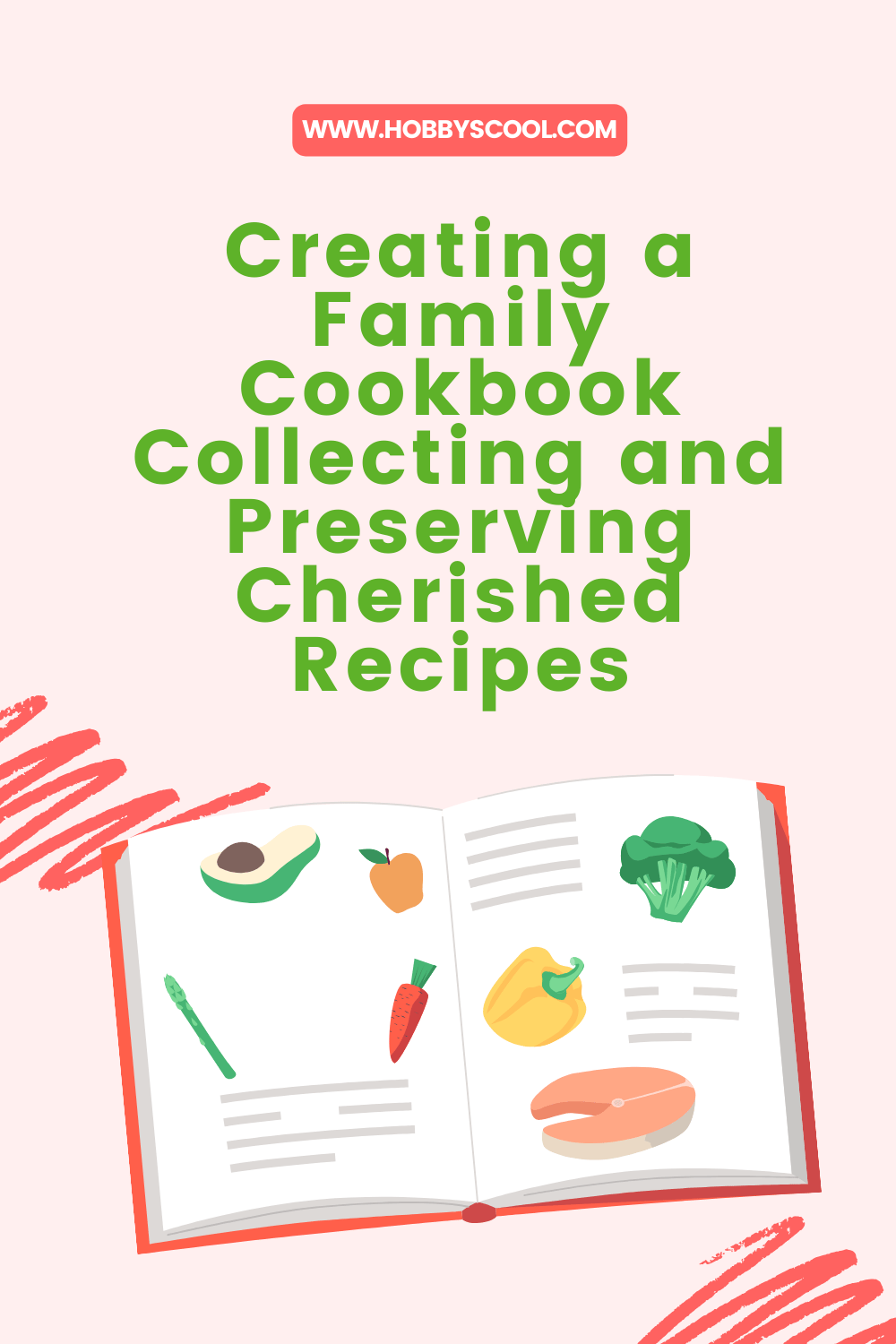Creating a Family Cookbook: Collecting and Preserving Cherished Recipes
It's more than just a collection of ingredients and instructions; it's a treasury of memories, a bridge between generations, and a celebration of your family's unique culinary heritage.
In this guide, we'll walk you through the process of creating your very own family cookbook, from gathering recipes to preserving them for future generations.
Why Create a Family Cookbook?
Before we dive into the how-to, let's consider why creating a family cookbook is such a worthwhile endeavor:
Preserves Family History: Recipes often carry stories and traditions that might otherwise be lost to time.
Connects Generations: A cookbook can bridge the gap between older and younger family members.
Celebrates Diversity: For families with mixed cultural backgrounds, it's a way to honor and preserve diverse culinary traditions.
Creates a Lasting Legacy: It's a tangible item that can be passed down through generations.
Encourages Cooking: Having family recipes easily accessible can inspire family members to cook more often.
Step 1: Planning Your Cookbook
Before you start collecting recipes, it's important to have a clear vision for your cookbook.
Consider the following:
Format
Will it be a physical book or digital?
If physical, will you use a binder for easy additions, or create a bound book?
If digital, will you use a blog, a shared document, or a dedicated recipe app?
Scope
Will you focus on a specific type of cuisine or include a variety?
Do you want to include only main dishes, or appetizers and desserts too?
Will you include family stories or photos along with the recipes?
Organization
How will you categorize the recipes? (By course, by season, by family member, etc.)
Will you include a table of contents or index?
Design
What kind of visual style do you want? (Rustic, modern, vintage, etc.)
Will you include photos of the dishes or family members?
Step 2: Gathering Recipes
Now comes the fun part – collecting those cherished family recipes!
Here are some strategies:
Host a Recipe-Sharing Party: Invite family members over for a potluck where everyone brings a dish and its recipe.
Interview Older Relatives: Spend time with grandparents or older relatives, cooking with them and documenting their recipes.
Dig Through Family Archives: Look through old recipe cards, handwritten notes, or vintage cookbooks in your family's possession.
Use Technology: Set up a shared online document or use a recipe-sharing app where family members can contribute remotely.
Recreate Lost Recipes: For dishes you remember but don't have a recipe for, try to recreate them and document the process.
Tips for Recipe Collection:
Be specific about measurements and instructions. "A pinch of this" or "cook until done" might not be helpful for future generations.
Document any variations or special tricks that family members use.
Note the origin of each recipe – who it came from and any story behind it.
If possible, cook each dish and take photos as you go.
Step 3: Organizing and Editing
Once you've gathered your recipes, it's time to organize and edit them:
Standardize Format: Create a template for your recipes so they all follow the same format. Include sections for ingredients, instructions, serving size, and any special notes.
Categorize: Group your recipes into logical categories. Common categories include:
Appetizers and Snacks
Soups and Salads
Main Dishes
Side Dishes
Desserts
Beverages
Holiday Specials
Edit for Clarity: Go through each recipe and ensure the instructions are clear and easy to follow. This might involve testing recipes to clarify vague instructions.
Add Context: Include any family stories, memories, or historical context associated with each recipe. This personal touch is what makes a family cookbook special.
Create an Index: An alphabetical index of recipes will make your cookbook easy to navigate.
Step 4: Adding Personal Touches
A family cookbook is more than just recipes – it's a snapshot of your family's history and personality.
Consider including:
Family Photos: Include pictures of family members cooking or enjoying meals together.
Recipe Origins: Share where each recipe came from – was it passed down through generations, or did someone invent it recently?
Cooking Tips: Include general cooking advice that's been passed down in your family.
Family Tree: A family tree at the beginning of the book can provide context for the recipes that follow.
Holiday Traditions: Describe any special food-related traditions your family has for holidays or celebrations.
Conversion Charts: Include handy references like measurement conversions or ingredient substitutions.
Blank Pages: Leave some blank pages for future additions to the cookbook.
Step 5: Design and Layout
Whether you're creating a digital or physical cookbook, the design is important.
Here are some tips:
Choose a Cohesive Theme: Select colors, fonts, and design elements that reflect your family's style.
Use High-Quality Images: If including photos, make sure they're clear and appetizing.
Create Section Dividers: Use attractive dividers to separate different categories of recipes.
Include a Table of Contents: This will make your cookbook easy to navigate.
Consider Practicality: If it's a physical book, consider using wipeable pages or a layout that lies flat for easy use while cooking.
Step 6: Production
How you produce your cookbook will depend on whether it's digital or physical:
For Digital Cookbooks:
eBook: Use software like Calibre or Scrivener to create an eBook that can be read on various devices.
Website: Platforms like WordPress or Squarespace can host a beautiful, interactive cookbook.
PDF: Create a PDF that can be easily shared and printed if desired.
For Physical Cookbooks:
DIY Printing: Print pages at home and assemble them in a binder or have them bound at a local print shop.
Professional Printing: Use a service like Blurb or Shutterfly to create a professional-quality bound book.
Handwritten: For a truly personal touch, consider handwriting recipes in a beautiful journal.
Step 7: Sharing and Preserving
Once your cookbook is complete, it's time to share it with your family:
Gift Copies: Present copies as gifts for holidays, weddings, or when young adults leave home.
Digital Sharing: If it's a digital cookbook, ensure all family members have access and know how to use it.
Regular Updates: Plan to update the cookbook periodically with new recipes and stories.
Backup: Keep digital backups of your cookbook in multiple locations to ensure it's never lost.
Family Gatherings: Use family gatherings as an opportunity to cook from the book and potentially add new recipes.
Tips for Success
Start Small: Don't feel pressured to include every recipe at once. Start with a core collection and add over time.
Involve Everyone: Make the cookbook a family project, with different members taking on various roles (recipe testing, photography, editing, etc.).
Be Inclusive: Include recipes from all branches of the family, including in-laws and step-family members.
Respect Privacy: If someone doesn't want to share a "secret" recipe, respect their wishes.
Make It Fun: Turn recipe collection into fun family activities, like cooking competitions or themed dinner parties.
Quality Over Quantity: It's better to have a smaller collection of well-loved, tested recipes than a large book of recipes no one uses.
Keep It Alive: Encourage family members to use the cookbook and contribute new recipes over time.
Conclusion
Creating a family cookbook is a labor of love that pays dividends for generations. It's a way to honor your family's culinary traditions, preserve cherished memories, and create a lasting legacy. More than just a collection of recipes, it's a testament to the bonds that food creates within a family.
As you embark on this journey, remember that the process is just as valuable as the final product. The conversations you'll have, the memories you'll uncover, and the time spent cooking together are all part of the rich tapestry of your family's history.
So gather your recipes, collect those stories, and start creating a family heirloom that will be cherished for years to come. Your family cookbook will be more than just a guide for cooking – it will be a guide to your family's heart, served up one delicious recipe at a time.
Happy cooking, and may your family cookbook be filled with love, laughter, and plenty of delicious memories!
Pin this and save for later







